Crime
Did Two Schoolteachers Pull Off the Heist of a Major de Kooning? A Documentary Explores Their Possible Double Lives
Jerry and Rita Alter and their apparent penchant for high-stakes art crime are the subject of a new documentary.
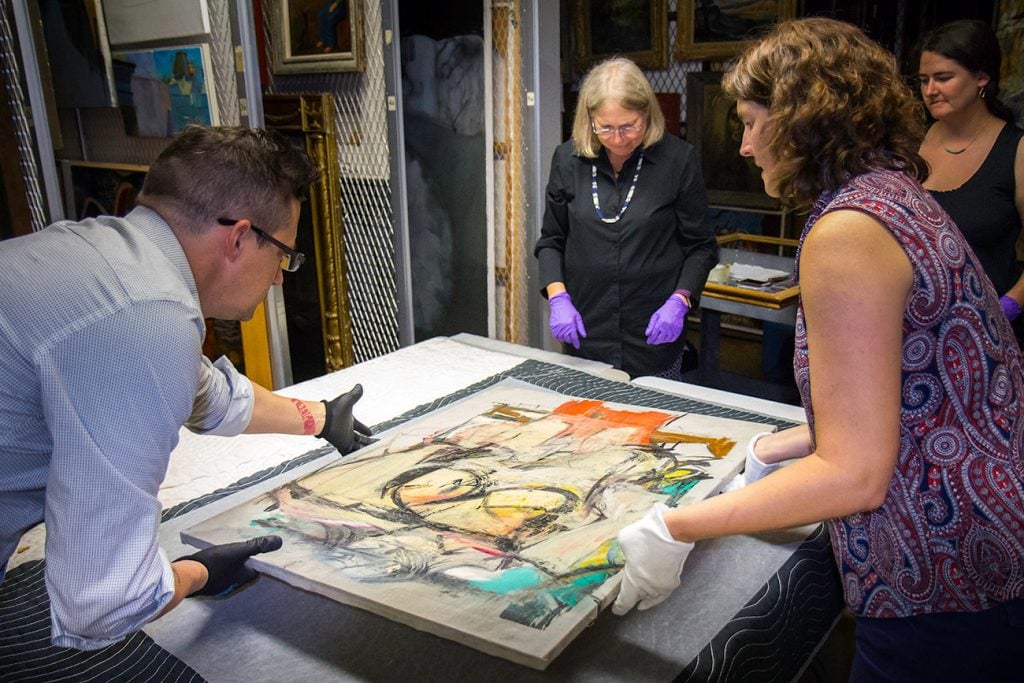
Jerry and Rita Alter and their apparent penchant for high-stakes art crime are the subject of a new documentary.

Sarah Cascone

An unsolved art heist captivates the imagination, conjuring images of acrobatic thieves hired by devious billionaires seeking the perfect trophy work to hang in their secret lair. That’s why it was all the more remarkable when, in 2017, Willem de Kooning’s Woman-Ochre (1954—55) was recovered nearly 32 years after its initial theft, hanging behind the bedroom door of a pair of elderly New Mexico schoolteachers.
It has never been definitively proven, but a new documentary, The Thief Collector, makes the case that Jerry and Rita Alter, who died in 2012 and 2017, respectively, were the unlikely masterminds behind the 1985 robbery at the University of Arizona Museum of Art in Tucson.
Worth an estimated $160 million, since its disappearance, Woman-Ochre had been on the FBI’s list of most-wanted stolen artworks. The painting’s unexpected recovery—and the theory that the Alters had pulled off the heist—made national news, attracting the attention of filmmaker Allison Otto, who began looking into the couple and the circumstances surrounding the crime, committed in broad daylight. (The film interviews the guard who was on duty during the heist, and even films his retirement from the museum decades later, content in the knowledge the painting has finally been found.)
“It was the kind of story that haunted me for months,” Otto told Artnet News. “Soon, I realized the theft was just the tip of the iceberg.”
The film starts off with the recovery, with the owners of Manzanita Ridge Furniture and Antiques in Silver City, New Mexico, recalling the first time they laid eyes on Woman-Ochre, when they purchased the contents of the Alters’ home for $2,000. (The good people of Silver City are less than impressed with the Abstract Expressionist masterpiece, with one local proclaiming, “I wouldn’t give you $5 for it.”)
An antique-shop regular and local painter, James Cuetara—interviewed in the documentary out of the back of his RV home—was the first to identify the de Kooning, offering to buy it for a couple hundred grand.
Intrigued, the shop’s owners did some digging and discovered old news articles about the crime. Afraid of potential thieves—or opportunistic meth heads—one owner hides the painting behind his sofa until the museum can come to claim it, because “people have been killed for less than a $100 million painting.”
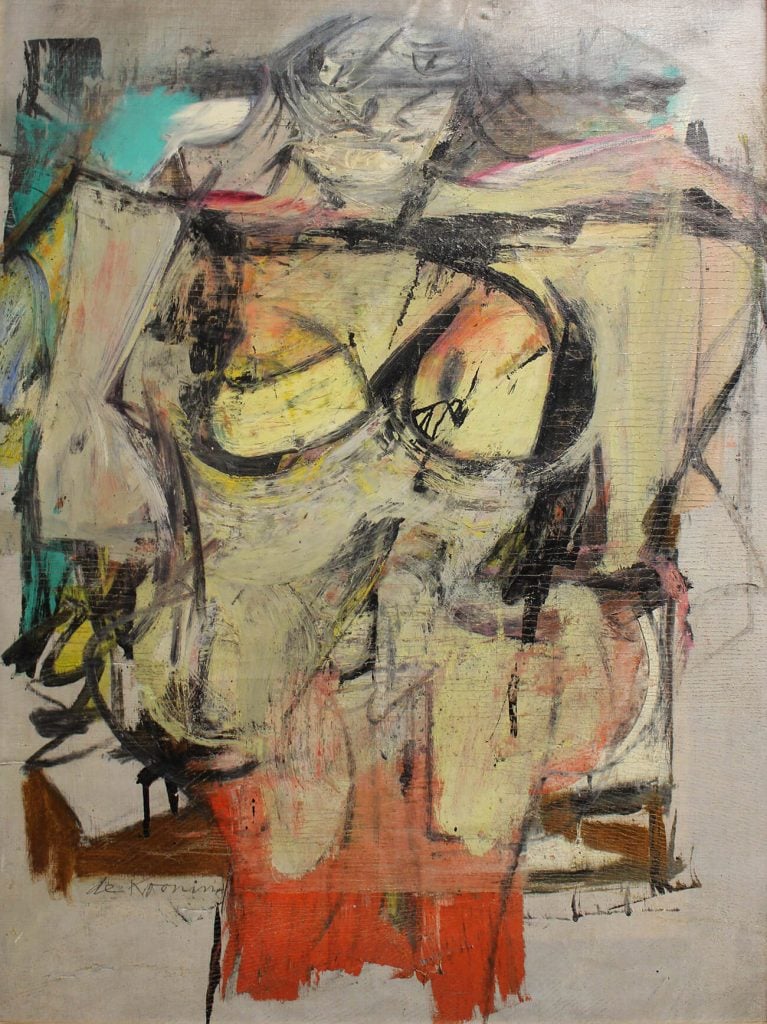
Willem de Kooning’s Woman-Ochre (1954–55) in August 2017, shortly after it was recovered in New Mexico and returned to the University of Arizona Museum of Art. © 2019 The Willem de Kooning Foundation/Artists Rights Society (ARS), New York.
The painting eventually makes its way to the Getty Center in Los Angeles, where Otto films its painstaking restoration, done under a microscope, one fleck of damaged paint at a time. The thieves cut the canvas out of its frame and rehung it, putting staples into the edge of the picture to put it on a new stretcher. They also did their best to retouch damaged areas, crudely painting over losses.
Jerry was a painter himself—the couple’s home was filled with his garish abstractions. He probably saw Woman-Ochre in its debut show, as he visited his sister who lived around the corner from the New York gallery while it would have been on view there.
“It’s very likely that Jerry Alter had this hubris that he could fix it,” Otto said. But she found that even in its damaged state, the painting still captivated.
“When you see Woman-Ochre in person, it really does hit you. I could feel its power—a blend of something that’s elegant and vulgar at the same time. It has this aura,” she added. “I’m really excited to see what it will look restored to its full glory.”
Following conservation, the painting will be unveiled at the Getty in the exhibition “Conserving de Kooning: Theft and Recovery” (June 7–August 28, 2022). But for the documentary, the bulk of story is about the Alters, and how they could have pulled off such a caper without their friends or family ever suspecting.
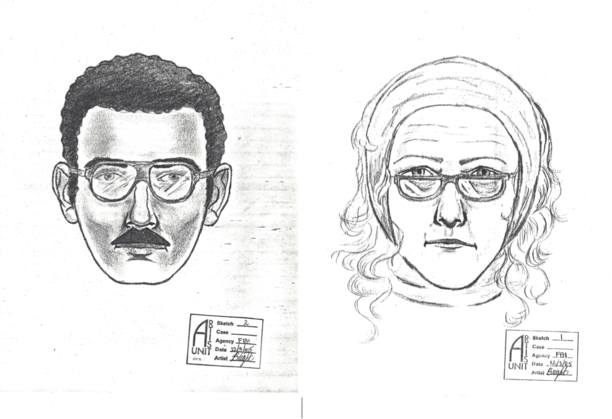
A police sketch of the suspects in the 1985 de Kooning heist released shortly after the crime took place. Image courtesy of the police department.
The Alters, who lived in Cliff, New Mexico, were in Tucson for Thanksgiving with family the day before the crime. They both bear a marked resemblance to police sketches of the male and female suspects—once you give Jerry a fake mustache—and their red car was a close match to the getaway vehicle used in the heist.
To paint the full picture of the couple, Otto interviews people who knew the Alters, including their nephew and estate executor, Ron Roseman, who provided unfettered access to their personal archives. That included Rita’s diaries, eight hours of home movies, and 12,000 slides of photographs the widely-traveled couple shot on their many vacations.
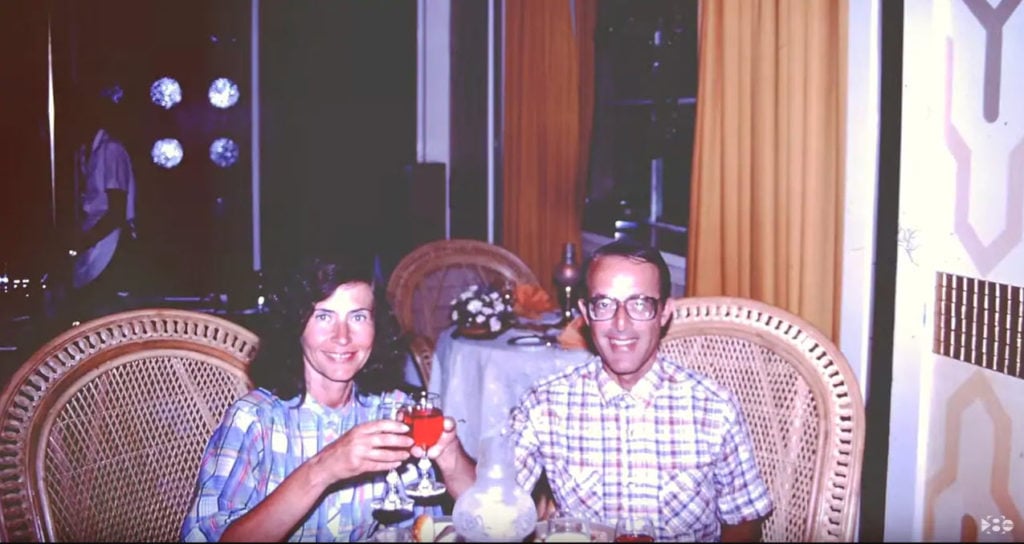
Jerry and Rita Alter. Photo courtesy of Ron Roseman.
But what truly sets the documentary apart are comical reenactments starring Glenn Howerton (of the TV show It’s Always Sunny in Philadelphia, and husband to one of the film’s producers, Jill Latiano) and Sarah Minnich (Better Call Saul) as the Alters. The actors also play the couple’s fictional counterparts, lifted from Jerry’s book of short stories, The Cup and the Lip: Exotic Tales, self-published in 2011.
“Jerry’s stories are so poorly written and over-the-top, so I wanted to lean into that rather than doing something very serious with the reenactments,” Otto said.
These writings, which Jerry told his nephew were based on his real-life experiences, actually provide some of the most compelling evidence that the Alters really did steal the de Kooning. But if the book is a confession, it is hard to tell where reality ends and fiction begins.
One story is about a woman and her granddaughter who visit a museum and make off with a valuable emerald from the galleries, creating a hidden display case at home where only they can enjoy it. The parallel with the stolen de Kooning, visible only from inside the Alters’ bedroom with the door closed, is undeniable.
Another is about a couple who “had a double life,” and “saw themselves as masters of victimless crimes.” A third, about a homeowner murders a Mexican day laborer for seducing his wife and buries him in his septic tank, hints at an even darker secret. Why, exactly, did the Alters refuse to replace their overflowing septic tank after 40 years, to the point of asking guests not to flush so they could dispose of excrement in the trash?
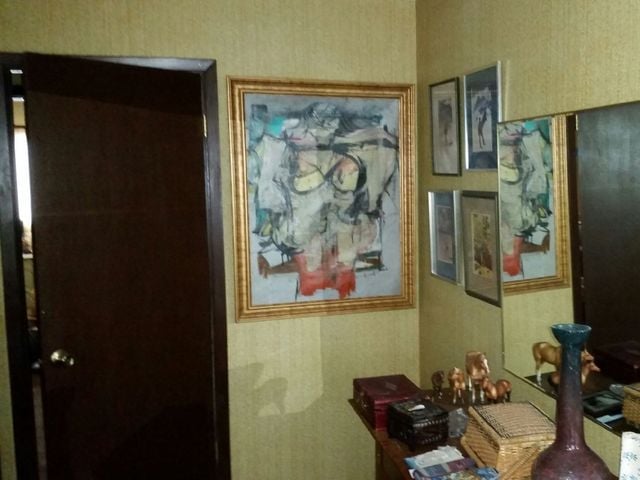
The stolen de Kooning seen hanging behind Jerry and Rita Alter’s bedroom door. Photo by Rick Johnson, courtesy of Manzanita Ridge Furniture & Antiques.
Otto draws on the text to build a psychological profile of Jerry, a man who believed in his own greatness but craved a wider recognition that eluded him. Why not prove his worth by getting away with an audacious crime, and living with the evidence just under everyone’s noses?
In the stories, “he’s the hero,” Otto said. “All these daring things are happening, and he’s in the thick of it.”
The Thief Collector, which premiered last month at the South by Southwest film festival, offers a fascinating portrait of a couple who may or may not gotten their thrills through stealing valuable works of art—and yes, works plural, not just the de Kooning.
There are the Alters’ travel photos from exotic locations the world over, which include many snapshots of museum treasures in glass cases—were they casing the joint, looking for security weaknesses to exploit in pursuit of their latest treasure?
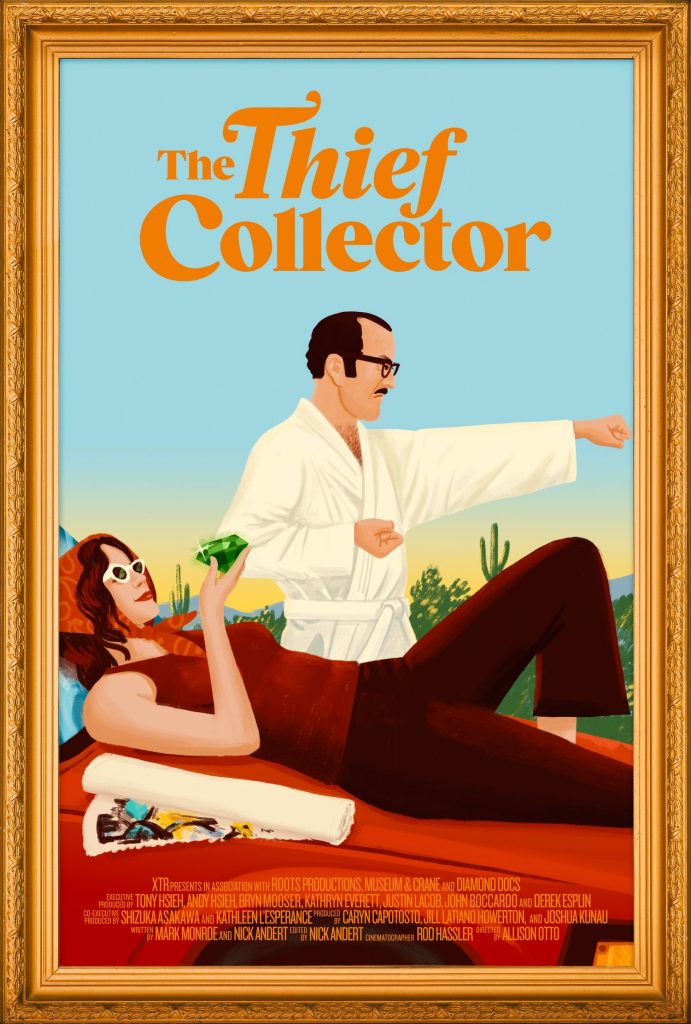
Poster for The Thief Collector, directed by Allison Otto. Courtesy of Root Productions.
And then there was their art collection, much of which the Alters’ family donated to the local Town and Country Garden Club. A bronze the couple had always claimed was a mere reproduction of a Frederic Remington proved to be an original, and was one of five valuable artworks that were ultimately auctioned for hundreds of thousands of dollars at Sotheby’s New York, including pieces by Joseph Henry Sharp and R.C. Gorman.
It was an unexpected windfall for the garden club, but did it represent the ill-gotten gains of a series of thefts? The FBI has run those works through their database, and there is nothing matching any known stolen art—but the agency hasn’t ruled it out, either.
The documentary also presents the possibility that the Alters were responsible for the theft of a $1 million Native American chief’s blanket from the Amerind Museum in Dragoon, Arizona. The stolen artwork was never recovered, but some of the Alters’ family and friends recalled the couple mentioning that their sizable collection of Native American rugs included one very valuable piece.
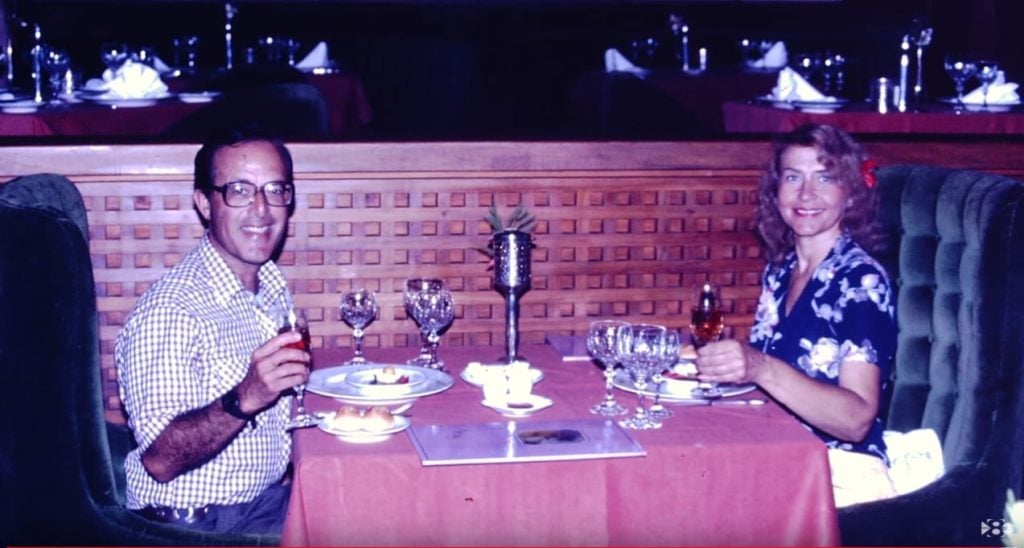
Jerry and Rita Alter. Photo courtesy of Ron Roseman.
The 1989 heist employed the same M.O. as the de Kooning robbery, with a woman accomplice distracting the guard while the man makes off with the artwork. The theft also took place on a day when the Alters would have been driving home from the airport in Arizona, with the museum conveniently located along their way.
On the days of both heists, Rita’s normally detailed datebook in which she recorded their activities is suspiciously blank.
The film leaves viewers wondering who the Alters really were, and about the true extent of their criminal activities. But the lingering mystery is intentional.
“I think the crime itself doesn’t need to be solved,” Otto said. “I love chatting about the possibilities—what’s real, what’s not.”
The Thief Collector will screen at the Cleveland International Film Festival on Saturday, April 9, 2022; at the San Francisco Film Festival on Friday, April 22, 2022; at Hot Docs in Toronto on May 3, 6, and 8, 2022; and at Mountainfilm in Telluride, Colorado, May 26–30, 2022.